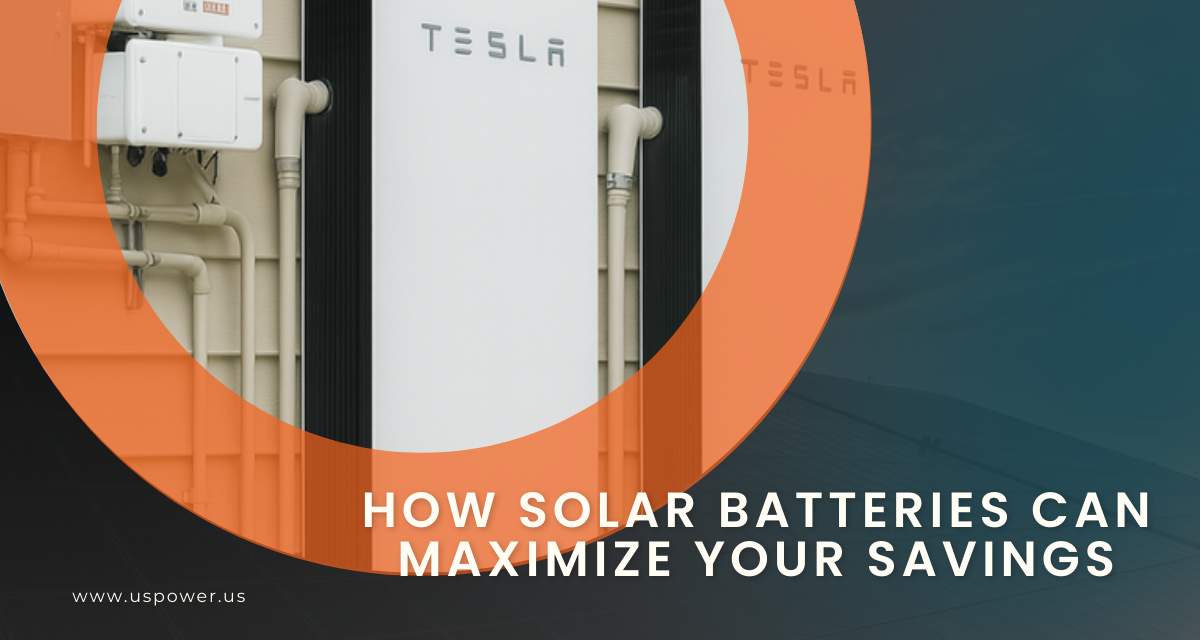Why Solar Project Is Stalled and How US Power Finish It by Year-End

Solar and Roofing Advisor
Stalled solar install? US Power + QCells can help California homeowners secure panels and finish your projects quickly to claim 2025 federal incentives.

If your solar installation is underway — permits approved, rails mounted — but you're still waiting on panels, you're not alone. Supply chain issues are hitting homeowners hard right now, causing costly delays even when everything else is ready to go. The frustration of being stuck under contract, unable to move forward, is real.
Here’s what many homeowners don’t realize: being flexible about panel brands and working with the right supplier can dramatically speed things up. (Yes, even in this tight market.)
This blog will help Southern California homeowners — like you — understand why panel supply is constrained, how to navigate the bottleneck, and why a trusted partner like US Power — offers a reliable, factory-direct path forward. By acting now, you can lock your system in and finish before key incentives expire.
Ready to get unstuck? Schedule a free consultation with US Power today — we’ll help assess what panels are truly available and design a system that meets your goals.
Why Are Solar Panels So Hard to Get Right Now?
Solar panel shortages are affecting homeowners nationwide. Even with permits approved and rails installed, projects stall because panels aren’t available. Understanding the root causes — from supply chain disruptions to rising demand — can help you navigate delays and plan a faster installation.
1. Global Supply Chain Disruptions
Many installers are facing the same issue: even Tier-1 panels are delayed because of constrained supply.
Delays come not just from finished panel production, but from upstream components like cells and wafers — especially with increasing regulatory checks.
For instance, QCells recently reported manufacturing slowdowns due to customs delays.
2. Tariffs, Trade, and Regulatory Risk
The U.S. import environment for solar components is tightening. Regulatory scrutiny (e.g. under laws like the Uyghur Forced Labor Prevention Act) is catching some solar raw materials, slowing production.
These compliance delays ripple down and limit how many panels high-quality manufacturers can ship, even with U.S.‑based production.
3. Surge in Demand + Year-End Push
Many homeowners know 2025 is a pivotal year: the 30% federal Investment Tax Credit (ITC) for residential solar is set to expire on December 31, 2025.
Installers are trying to fulfill as many contracts as possible before this deadline. That means demand is super high, and inventory is tight.
What This Means for California Homeowners
For California residents, these delays can have real financial consequences. Missing federal or state incentives, paying higher utility bills, or facing installer backlogs are all risks. Acting strategically now ensures you lock in savings and complete your system before deadlines like the 2025 ITC or SGIP rebates expire.
A. Time Is Running Out
Missing the 2025 ITC means losing a major financial incentive.
Delays could push your project into 2026 — where the credit starts to phase down.
With so many people racing to finish by year-end, installer backlogs are tightening.
B. Higher Pressure to Be Flexible
Homeowners who insist on a specific panel brand (e.g. “I only want brand X”) may get stuck waiting — especially if that brand is in tight supply.
The faster-moving distributors may have “whatever Tier‑1 is in stock” — including QCells, Longi, JA, Aptos, etc. These are still high-quality panels. (This mirrors what some homeowners in other states are doing to avoid delays.)
C. Incentives Don’t Align Forever
In California, incentives like the Self-Generation Incentive Program (SGIP) for battery storage are still offering strong rebates.
There’s also a property tax exclusion: your new solar system’s added home value doesn’t count toward reassessed property taxes — a huge win for long-term savings.
Why Partnering with US Power (and QCells) Gets You Unstuck
Working with a factory-direct partner like US Power, in exclusive partnership with QCells, can remove bottlenecks from your solar project. With reliable panel supply, American-made quality, and seamless battery integration, homeowners can complete their systems faster and maximize both incentives and long-term savings.
Exclusive, Factory‑Direct QCells Access
At US Power, we have an exclusive partnership with QCells — meaning we don’t always rely on the same third-party distributors that others do.
QCells operates one of the largest solar module factories in the U.S., in Dalton, GA. By going direct, we help avoid the “waiting game” caused by middle‑men stockouts.
American‑Made Quality + Incentive Benefits
QCells is investing heavily in U.S. manufacturing: their Cartersville, GA facility will be producing ingots, wafers, cells, and finished panels.
Using U.S.-made panels may also qualify you for additional tax incentives — for instance, under the Inflation Reduction Act, a “domestic content bonus” can apply.
QCells modules come with long-term warranties (25 years and more for product and performance).
Seamless Design + Storage Integration
We don’t just design for panels — we plan for battery storage, too.
Battery systems (like Powerwalls or other high-quality brands) can be paired with your solar and maximize how much of your energy you actually use, minimizing exports under lower net-billing tariffs.
Thanks to SGIP, adding a battery isn’t just smart — it’s also more affordable.
Real “Finish-by-Year-End” Strategy
Our team knows the 2025 ITC deadline inside out. We can fast-track design, procurement, and installation to help you take full advantage while it's still available.
Because of our direct QCells access and established supply chain, we’re less likely to be stuck waiting on panel shipments.
How to Work With Your Installer to Avoid Delays
Even if your project is already underway, proactive steps with your installer can prevent further delays. From confirming inventory to considering alternative Tier-1 panels and adding storage, strategic coordination ensures your system is completed on time — avoiding missed deadlines and lost incentives.
Ask for Inventory Transparency
Request that your installer share exactly which panels are on-order, from what supplier, and whether they have confirmed delivery dates.
If they’re not sure, it might be time to escalate or involve a procurement-focused partner (like US Power).
Suggest Alternative Tier-1 Brands
Encourage your installer to call multiple local distributors, not just their usual source. Some installers have reported getting panels from Krannich Solar, CED Greentech, or other regional distributors.
Be open to brands similar in quality — QCells, JA, Longi, Aptos — rather than sticking to only the original choice.
Lock In Your System Design + Pre‑Order
Ask your installer to place a pre-order for your panels now (if possible), even if the install isn’t scheduled yet.
Make sure they’re coordinating with a supplier that has a reliable track record and lead times.
Consider Adding Storage
If you haven’t already, discuss pairing your solar with a battery. This not only improves self-consumption but helps you hedge against unpredictable utility export rates.
Confirm whether SGIP or other rebate programs are available in your utility territory.
Align Financing on Incentive Deadlines
Confirm with your installer and/or financier that your system will be completed, inspected, and “placed in service” before December 31, 2025, to guarantee the 30% federal tax credit.
Ask about how they handle tax credit documentation or safe harbor provisions (if applicable).
Real-Life Case: How Flexibility Saved a Project
Here’s a composite example based on real industry trends:
A homeowner in SoCal originally contracted for Brand A panels. Due to delays, the installer couldn’t confirm shipment. The homeowner (or their procurement partner) pushed for Tier‑1 alternatives. The installer reached out to multiple distributors, found a local supplier with QCells, and reordered.
By tapping QCells via a factory-direct partner, the procurement was secured, batteries were added via SGIP, and the project was routed for installation — all before the end of 2025.
The system qualifies for the 30% ITC, is built with American-made modules, and delivers long-term savings with reduced time to payback.
Why This Matters More in Southern California
- High electricity rates: Solar + storage helps offset expensive utility bills — especially with peak summer usage.
- Strong sunlight: California’s sunshine means you can generate a lot more, making solar cost-effective.
- Net billing / NEM changes: With evolving compensation structures for exported energy, having a battery helps you maximize your self-consumption.
- Competitive installer landscape: Demand is high, and not all installers have secure supply chains. Working with a partner that prioritizes procurement can give you an edge.
- Limited time for incentives: The 2025 ITC deadline and finite SGIP funding mean acting now is urgent.
Let’s Get Your Solar Project Across the Finish Line
- Book a Free Consultation — Connect with US Power’s expert team. We’ll run a procurement check, project timeline, and system design based on real inventory.
- Lock Your Panels — We’ll help place orders for QCells panels and secure battery options to avoid further delays.
- Maximize Incentives — We’ll guide you through leveraging the 30% federal tax credit, SGIP rebates (if eligible), and California-specific benefits.
- Finish Before Year-End — Our streamlined process is designed to help you complete your install in time to take full advantage of 2025 incentives.
Don’t Let Supply Bottlenecks Derail Your Solar Dream
If your solar project is already underway but stuck waiting on panels, you’re not powerless. By being flexible on brands, partnering with a procurement-savvy installer, and leveraging US Power’s exclusive access to QCells, your system doesn’t have to wait.
Time is of the essence: with major incentives expiring at the end of 2025 and supply chains still strained, acting now is your best shot at saving money and finishing strong.
Ready to move forward? Reach out to US Power today, and let’s secure your system — so you don’t lose time, money, or peace of mind.
Artículos relacionados
Nuestros blogs relacionados
Discover how solar batteries store energy and maximize your monthly savings.
California homeowners learn incentives, permitting & costs for going solar now.
Take advantage of full solar tax credits and rising energy rates—go solar now.
Nuestros socios de marcas de energía solar y techos








Empoderamos a las comunidades y las empresas para que aprovechen las energías limpias y renovables energía solar soluciones que impulsan el crecimiento sostenible.
Derechos de autor © 2025 US POWER | Energía solar y techosUS Power - Axia by QCells. All Rights Reserved.
La privacidad es importante para nosotros, por lo que tiene la opción de deshabilitar ciertos tipos de almacenamiento que pueden no ser necesarios para el funcionamiento básico del sitio web. El bloqueo de categorías puede afectar a su experiencia en el sitio web.
Imprescindible
Estos elementos son necesarios para habilitar la funcionalidad básica del sitio web.
Personalización
Estos elementos permiten que el sitio web recuerde las elecciones que ha realizado (como el nombre de usuario, el idioma o la región en la que se encuentra) y proporcionan funciones mejoradas y más personales.
Mercadeo
Estos artículos se utilizan para ofrecer publicidad que sea más relevante para usted y sus intereses.
Analítica
Estos elementos ayudan al operador del sitio web a comprender cómo funciona su sitio web, cómo interactúan los visitantes con el sitio y si puede haber problemas técnicos.
Nosotros y nuestros socios externos utilizamos cookies y otras tecnologías para mejorar y rastrear su experiencia en este sitio, realizar análisis y personalizar el marketing para usted. Al usar el sitio, aceptas que usemos estas tecnologías, incluido el registro y el monitoreo de tus interacciones con el sitio.
¡Obtenga una estimación solar instantánea usando el satélite!










